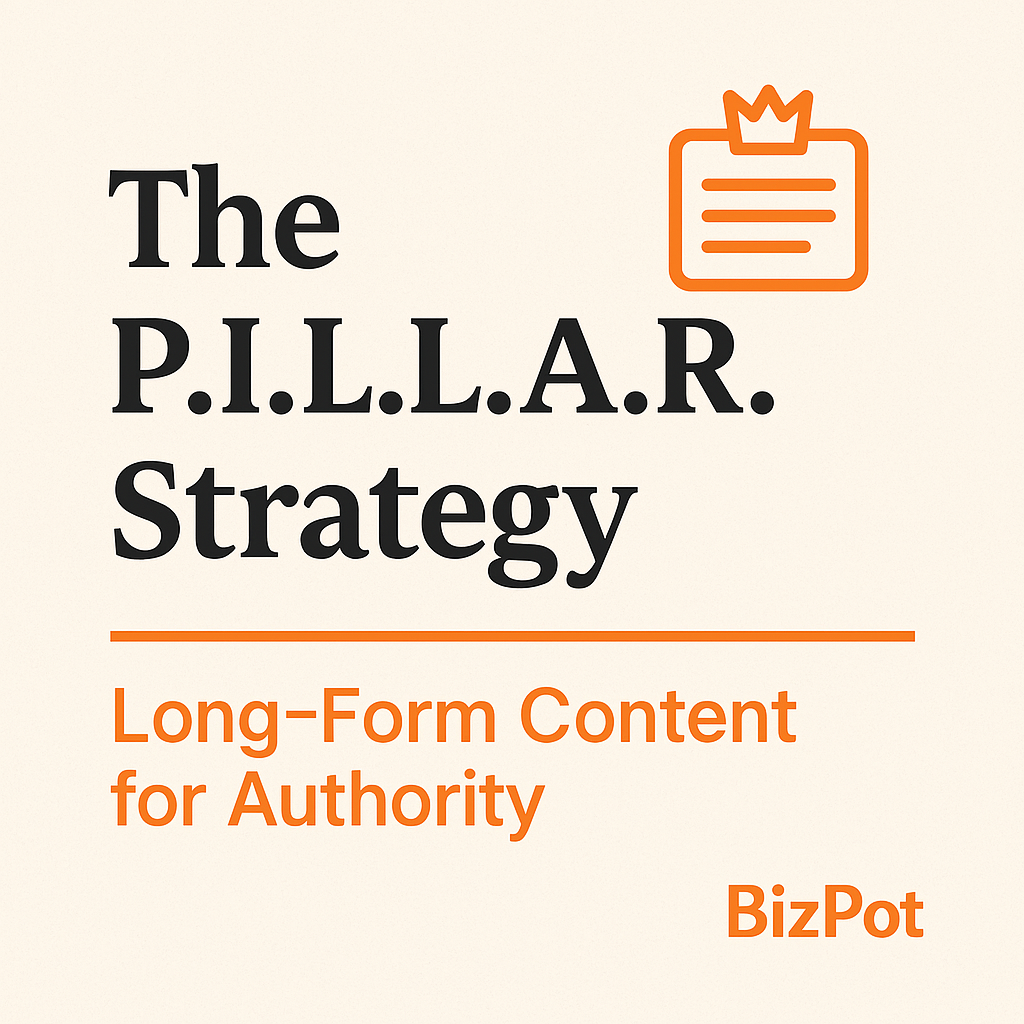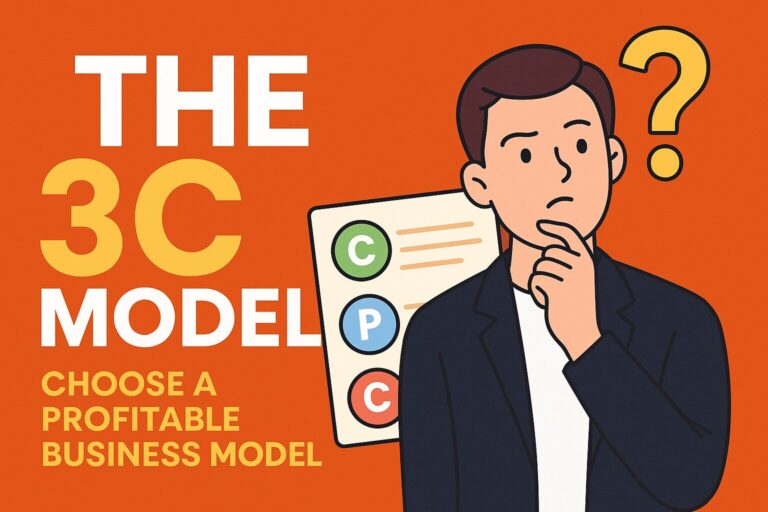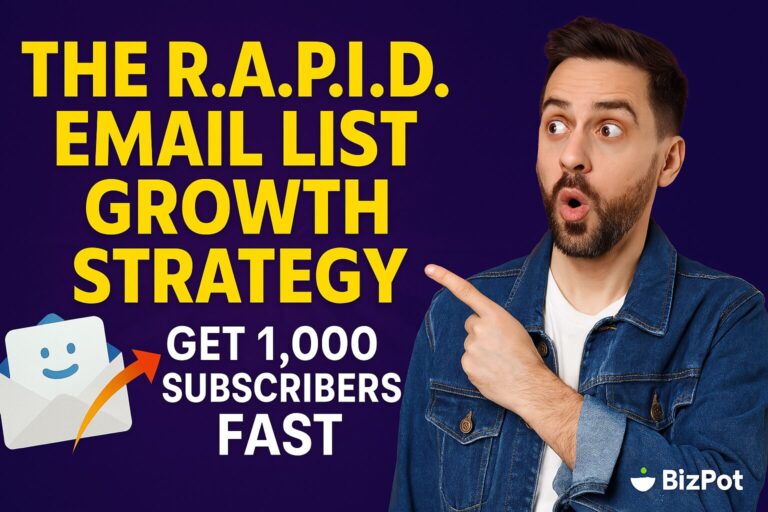The P.I.L.L.A.R. Strategy
Long-Form Content for Authority

🔹 Introduction
Want to establish yourself as an authority in your industry? Long-form content is the key. The P.I.L.L.A.R. Strategyhelps you create in-depth, evergreen content that positions you as a go-to expert and keeps your audience coming back for more.
🔹 What Is the P.I.L.L.A.R. Strategy?
The P.I.L.L.A.R. Strategy consists of six key elements:
✅ P – Problem-Solving (Address deep audience pain points)
✅ I – In-Depth Research (Use data, case studies, and expert insights)
✅ L – Logical Structure (Organize content for easy readability)
✅ L – Longevity (Make content evergreen and future-proof)
✅ A – Authority Positioning (Showcase expertise and credibility)
✅ R – Repurposability (Transform long-form content into multiple formats)
Let’s break down each element so you can create powerful long-form content.
1️⃣ Problem-Solving – Address Deep Audience Pain Points
Great content starts by solving a real problem. Long-form content should go beyond surface-level advice and offer detailed, actionable solutions.
How to Make Content Problem-Solving:
- Identify recurring struggles your audience faces.
- Use real-world examples and step-by-step solutions.
- Address common objections and provide clear next steps.
Example: A startup consultant writes a 5,000-word guide on “How to Raise Seed Funding Without Venture Capital,” packed with practical strategies.
Action Step: Choose one major problem in your industry and create a deep-dive guide on solving it.
2️⃣ In-Depth Research – Use Data, Case Studies, and Expert Insights
To stand out, your content must be well-researched and credible. People trust information backed by data and expert opinions.
How to Conduct In-Depth Research:
- Reference reputable sources, studies, and statistics.
- Include case studies and success stories to reinforce points.
- Quote industry experts or conduct interviews.
Example: A digital marketing agency publishes “The State of SEO in 2024,” featuring data from 100+ case studies and expert interviews.
Action Step: Add at least 3 data points, case studies, or expert quotes to your next long-form content piece.
3️⃣ Logical Structure – Organize Content for Easy Readability
Even long-form content needs to be digestible and engaging. A well-structured post keeps readers hooked from start to finish.
How to Improve Readability:
- Use clear headings, subheadings, and bullet points.
- Write in short paragraphs for easy scanning.
- Add visuals, charts, or infographics to break up text.
Example: A business coach structures a 3,000-word guide into “5 Simple Steps,” making it easier for readers to follow.
Action Step: Review your content’s structure—can it be formatted into a step-by-step guide or a list post?
4️⃣ Longevity – Make Content Evergreen and Future-Proof
Content should remain relevant for years, bringing traffic long after it’s published.
How to Make Content Evergreen:
- Focus on timeless principles instead of fleeting trends.
- Update posts periodically with fresh data and examples.
- Optimize for search engines to keep driving traffic.
Example: A SaaS company creates “The Ultimate Guide to SaaS Pricing Models,” ensuring it remains relevant for future startups.
Action Step: Identify 3 blog topics you can turn into evergreen guides that will stay useful over time.
5️⃣ Authority Positioning – Showcase Expertise and Credibility
Long-form content builds trust—especially when you establish yourself as an expert.
How to Build Authority:
- Share personal insights and experiences.
- Provide actionable frameworks and unique perspectives.
- Include testimonials or success stories to prove your expertise.
Example: A productivity coach writes a “Definitive Guide to Time Management” with personal strategies from their own coaching experience.
Action Step: In your next post, include a personal story or case study to establish credibility.
6️⃣ Repurposability – Transform Long-Form Content into Multiple Formats
A single long-form post can be repurposed into multiple pieces of content across different platforms.
How to Repurpose Content Effectively:
- Break down sections into social media posts, infographics, or short videos.
- Create a lead magnet (eBook, checklist) from the main content.
- Turn key insights into a podcast episode or webinar.
Example: A finance blog turns a “Comprehensive Guide to Budgeting” into 10 short LinkedIn posts, a YouTube video, and an email series.
Action Step: Choose one of your existing long-form articles and repurpose it into at least 3 new content formats.
🔹 Quick Takeaways (Summary)
✅ Problem-Solving: Tackle deep audience pain points.
✅ In-Depth Research: Use data, case studies, and expert insights.
✅ Logical Structure: Make content easy to scan and read.
✅ Longevity: Ensure your content stays evergreen.
✅ Authority Positioning: Establish credibility with unique insights.
✅ Repurposability: Transform long-form content into multiple formats.






